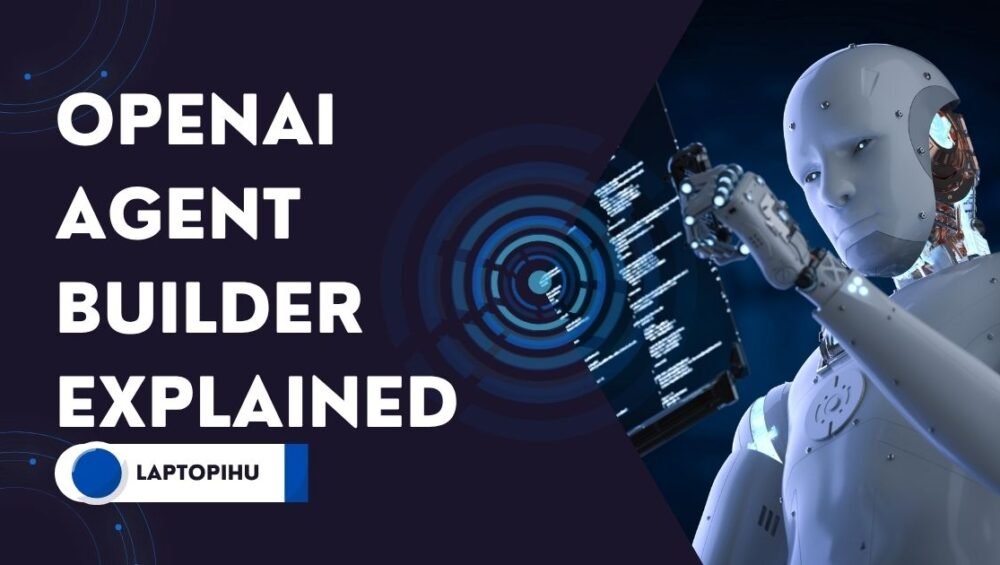Discover how OpenAI Agent Builder lets you create smart, no-code AI agents with visual tools, connectors, and automation for any business task.
Introduction
The world of artificial intelligence is evolving fast, and OpenAI is leading the charge once again with its latest innovation — OpenAI Agent Builder. This groundbreaking platform allows anyone, from developers to business owners, to design and deploy intelligent AI agents without heavy coding knowledge. Imagine having your own digital assistant that performs complex tasks, manages workflows, and integrates with your tools — that’s exactly what Agent Builder offers.
What is OpenAI Agent Builder
OpenAI Agent Builder is a no-code and low-code platform that helps users create intelligent agents visually. Instead of writing long scripts or code, users can drag and drop elements on a visual canvas to define how their agent behaves. Each agent can think, plan, and execute actions based on user prompts or data inputs. It’s like designing your own mini AI employee that works exactly how you want it to.
Why OpenAI Created Agent Builder
OpenAI introduced Agent Builder to make AI more accessible and powerful for everyday users. The goal is simple — enable anyone to build customized AI agents that can automate workflows, handle data tasks, and communicate intelligently. Instead of relying solely on developers or complex APIs, businesses can now experiment with AI-driven automation faster than ever before.
Key Features of OpenAI Agent Builder
One of the most attractive aspects of Agent Builder is its simplicity. It includes a visual canvas, drag-and-drop flow creation, and integrated tools that connect your agent to external apps and services. The platform also supports guardrails for safety and SDK integration for developers who want to extend functionalities. Whether you’re an enterprise user or a solo creator, these features give you full control over how your agent performs.
Visual Canvas for Building Agents
The visual canvas is where all the magic happens. You can create workflows by connecting nodes that represent actions, decisions, or data sources. Each node acts as a building block, helping you visually design the logic of your agent. This structure makes complex automations much easier to understand and debug.

Prebuilt Tools and Connectors
Agent Builder comes with a range of prebuilt tools and connectors that link your AI to popular services like email, CRMs, file systems, and more. For example, you can build an agent that reads customer support tickets, summarizes them, and drafts replies automatically — all without custom coding.
Developers Can Go Deeper with SDK
While the platform is beginner-friendly, developers aren’t left out. OpenAI offers an Agent SDK for those who prefer to work with code. This means that after visually creating your agent, you can export the logic, modify it, and integrate it into your production systems. It’s a perfect blend of no-code and pro-code flexibility.
How to Build Your First Agent
To start, identify the specific task you want your agent to perform — for instance, summarizing documents, answering FAQs, or automating emails. Open the Agent Builder dashboard, create a new project, and begin by adding a Start node. Then, connect it to an Agent node to define your AI’s main reasoning logic. Add Tool nodes to integrate with APIs or databases, and use Guardrail nodes to maintain safety and accuracy. Once the flow is set up, test it in the sandbox environment before deployment.
Popular Use Cases
Agent Builder is versatile. Many businesses use it for customer support automation, internal data analysis, and marketing campaign management. Researchers use it for summarization and content discovery, while developers create agents that handle repetitive coding tasks. Essentially, if there’s a process you can describe in steps, you can automate it with Agent Builder.
Advantages of Using OpenAI Agent Builder
The biggest advantage is the time and cost savings. Creating intelligent systems no longer requires a team of engineers. With its visual interface, you can prototype and deploy agents in hours instead of weeks. It also ensures consistency — your AI follows the same logic every time, reducing human error.
Ensuring Safety and Privacy
Since agents may access sensitive data, OpenAI includes strong safety measures. You can configure data permissions, use encrypted connections, and apply guardrails that prevent the AI from executing unauthorized tasks. This gives organizations confidence to use AI responsibly while maintaining control over information flow.

Testing and Iteration
Before deploying an agent, users can test workflows using the built-in sandbox environment. This feature allows you to simulate real scenarios, catch mistakes, and optimize your agent’s logic. Continuous testing ensures your agent behaves as intended before going live.
Deployment and Scaling
Once your agent is ready, you can deploy it to handle real-world tasks. OpenAI Agent Builder makes scaling simple — whether it’s managing ten customer interactions or ten thousand. It’s built to handle high-volume operations smoothly, allowing you to expand your AI capabilities as your business grows.
Best Practices for Building Reliable Agents
To make the most of Agent Builder, start small and expand gradually. Keep your instructions clear, break large tasks into smaller sub-tasks, and always test edge cases. If your agent handles sensitive operations, keep a human-in-the-loop for final approvals. Regularly review logs and feedback to refine performance over time.
Integration with Other OpenAI Tools
Agent Builder integrates perfectly with other OpenAI tools like GPT models, APIs, and DALL·E. This means your agent can not only process data but also generate creative outputs, visuals, and insights. The combination opens up endless opportunities for automation and innovation.

Cost and Accessibility
Currently, Agent Builder is available through OpenAI’s platform and may have different access levels depending on usage and subscription type. Businesses can expect a pay-as-you-go structure, while enterprise users can integrate it into broader AI systems with custom plans.
Conclusion
OpenAI Agent Builder marks a major leap forward in democratizing AI creation. It’s no longer a complex field reserved for tech giants — now anyone can design, test, and deploy intelligent agents that automate meaningful work. Whether you’re running a startup, managing data, or building customer experiences, this tool can save time, boost productivity, and transform how you operate. The future of automation is here — and it’s visually built.
FAQs
Q1: Do I need coding experience to use Agent Builder?
No, you can build fully functional agents using its drag-and-drop interface without writing any code.
Q2: Can I integrate my agent with external tools?
Yes, you can connect your agent to CRMs, emails, APIs, and databases using built-in connectors.
Q3: Is Agent Builder suitable for large businesses?
Absolutely. It’s scalable and can handle high-volume workflows efficiently, making it ideal for enterprises.
Q4: How do I ensure data privacy while using agents?
You can configure permissions, apply encryption, and set guardrails to ensure data remains protected.
Q5: Can I test my agent before launching it?
Yes, OpenAI provides a sandbox environment to simulate and refine your agent’s performance before deployment.






